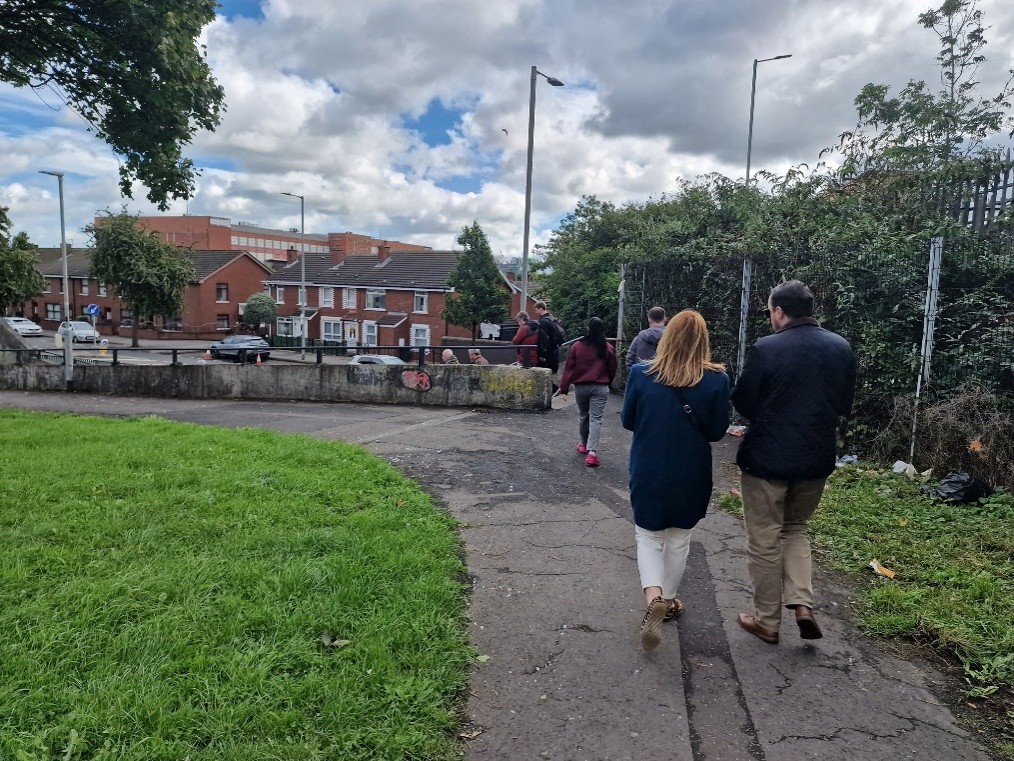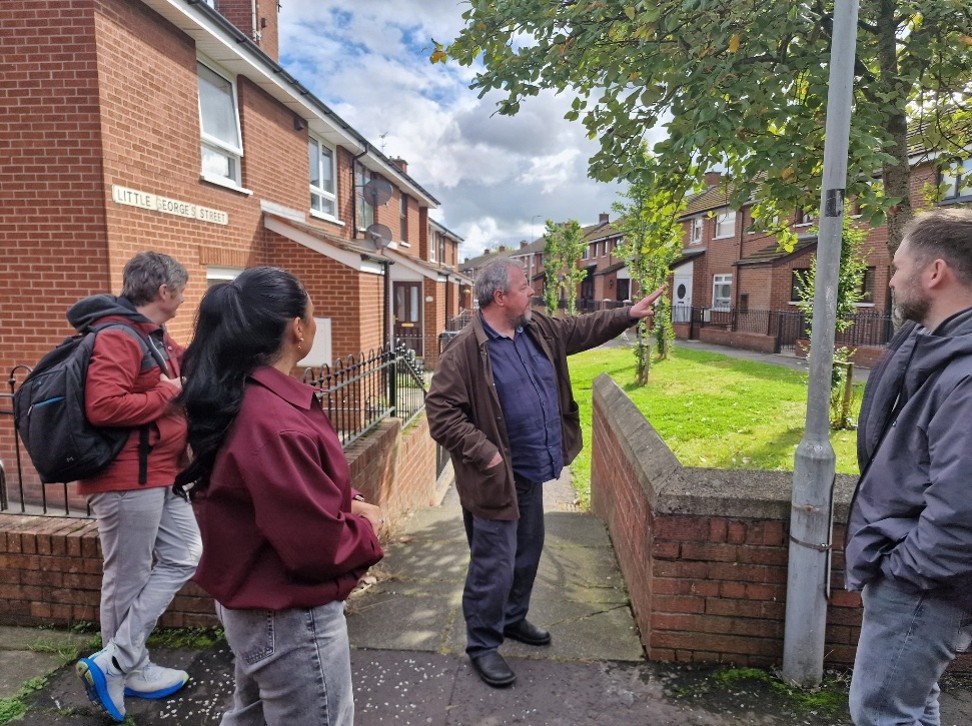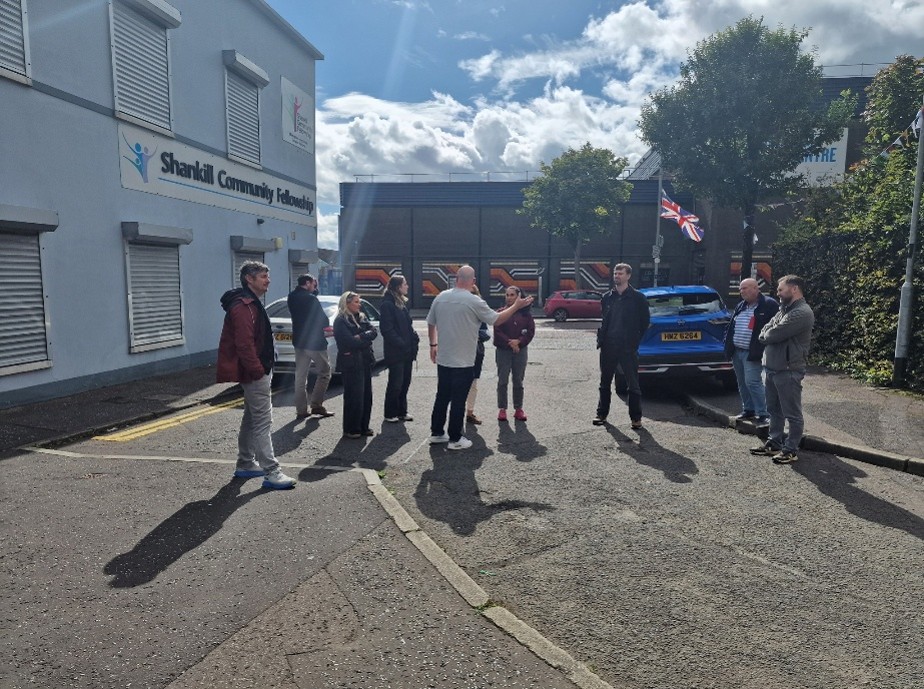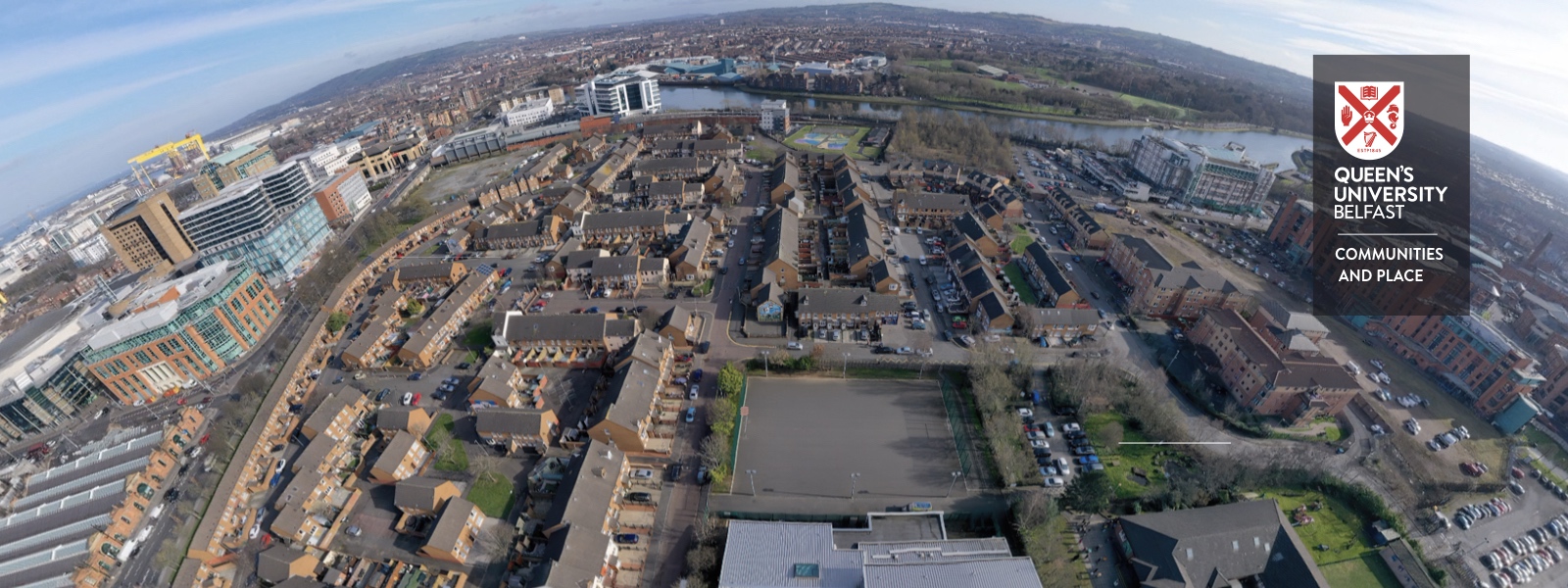Learning Through Place: Community Research Network Tours New Lodge and Shankill
In September 2025, the Community Research Network met to discuss ideas and ongoing projects, as well as introduce each other to their areas via tours. This time, the Network visited New Lodge and Shankill.

Understanding the Planning Context
The day commenced with architect Mark Hackett explaining the challenges of urban development in Belfast from a planning perspective. He drew on his long experience in architecture and community activism in Belfast to explain the unique challenges in the Belfast context where, he argued, a more coherent vision is needed that understands the city as a complex interdependent whole. Planning and urban development cannot solely work building-by-building or project-by-project, he explained, but must fit into a grander vision for the future of the city. He went on to emphasise the important spatial dimensions of urban planning which must be taken into account. This sparked a discussion about how other cities have been planned around the world, different national approaches to city design, and how the community partners could best tackle issues of urban development right now in Belfast.
Tour of New Lodge
Mark Hackett then took the partners on a tour of New Lodge. Throughout, he continued to ground ongoing issues in the context of the area’s unique built environment – a valuable but often under-appreciated perspective. The community partners saw how the motorway had been built right beside residential housing in New Lodge. This caused noise pollution and cut the area off from the city centre and its associated socioeconomic benefits. Similarly, the lack of car access and maze of alleyways with few windows looking onto them made antisocial behaviour hard to police. The tour ended with a discussion of the ongoing development of the city centre and how inner-city working-class communities could be tied into the benefits of it.

Tour of Shankill
Billy Drummond from Alternatives NI and the BUILD project then took the group on a tour of the Shankill. Drawing on the running theme of the built environment and spatial dimension in community planning, he began by explaining how the hilly topography of the Glencairn area of Greater Shankill reduced connectivity which had knock-on effects on community cohesion. He talked about the current and historical significance of the Shankill in terms of the concentration of events of the Troubles in the area and how ongoing local events continued to have ripple effects throughout Northern Ireland. He also discussed the chicken-and-egg dynamic wherein the area’s reputation discouraged outside investment which further cemented ongoing issues and its reputation. He gave a number of counter-examples of ongoing positive projects in the area and explained how outside perspectives of the Shankill are often unfairly one-dimensional. Drawing on both local knowledge and deep academic history going back to the 5th century AD, he wove a rich historical narrative of the area, demonstrating the strength of combining local community knowledge with academic research. This, in a way, was a metaphor for the Community Research Network as a whole.


